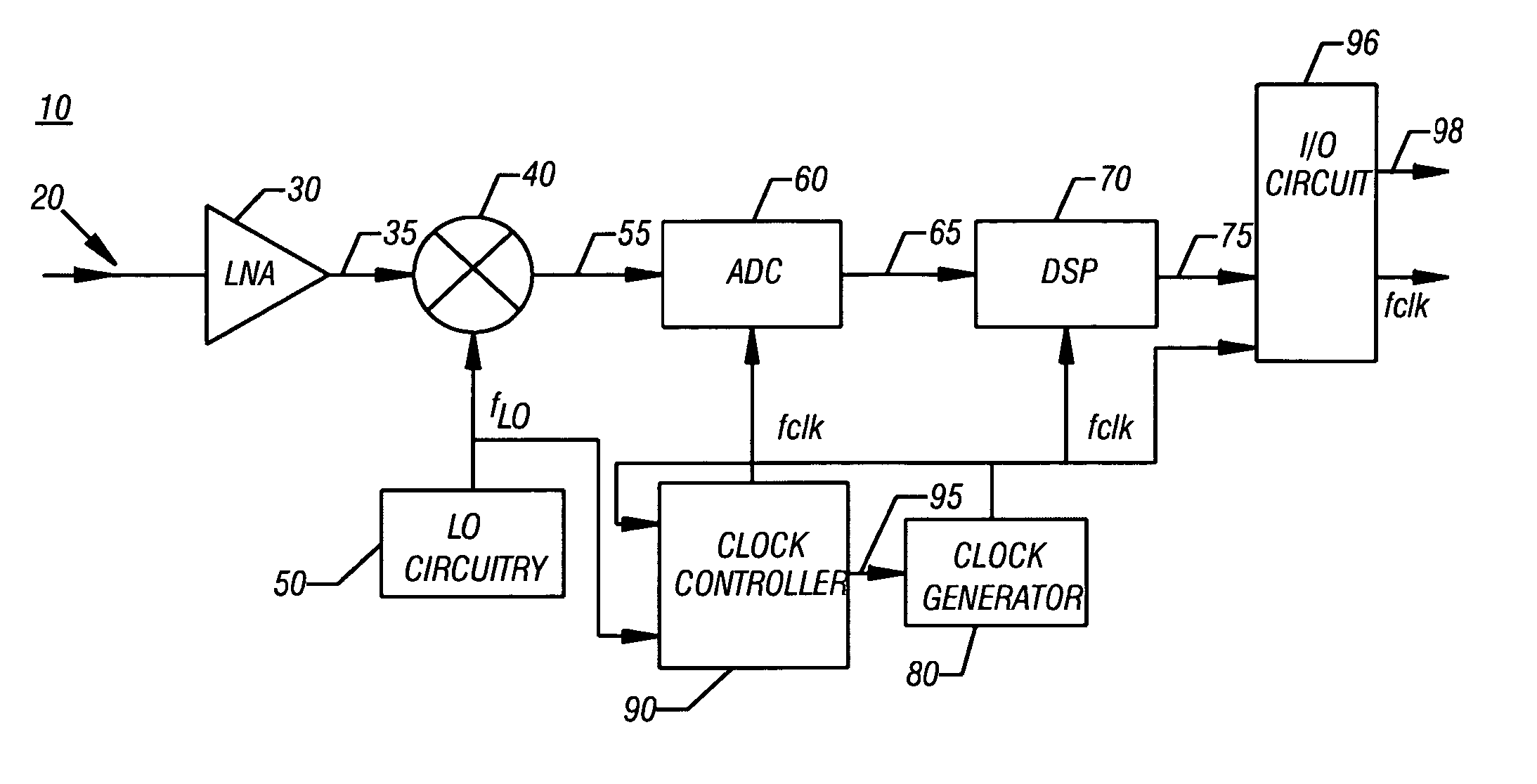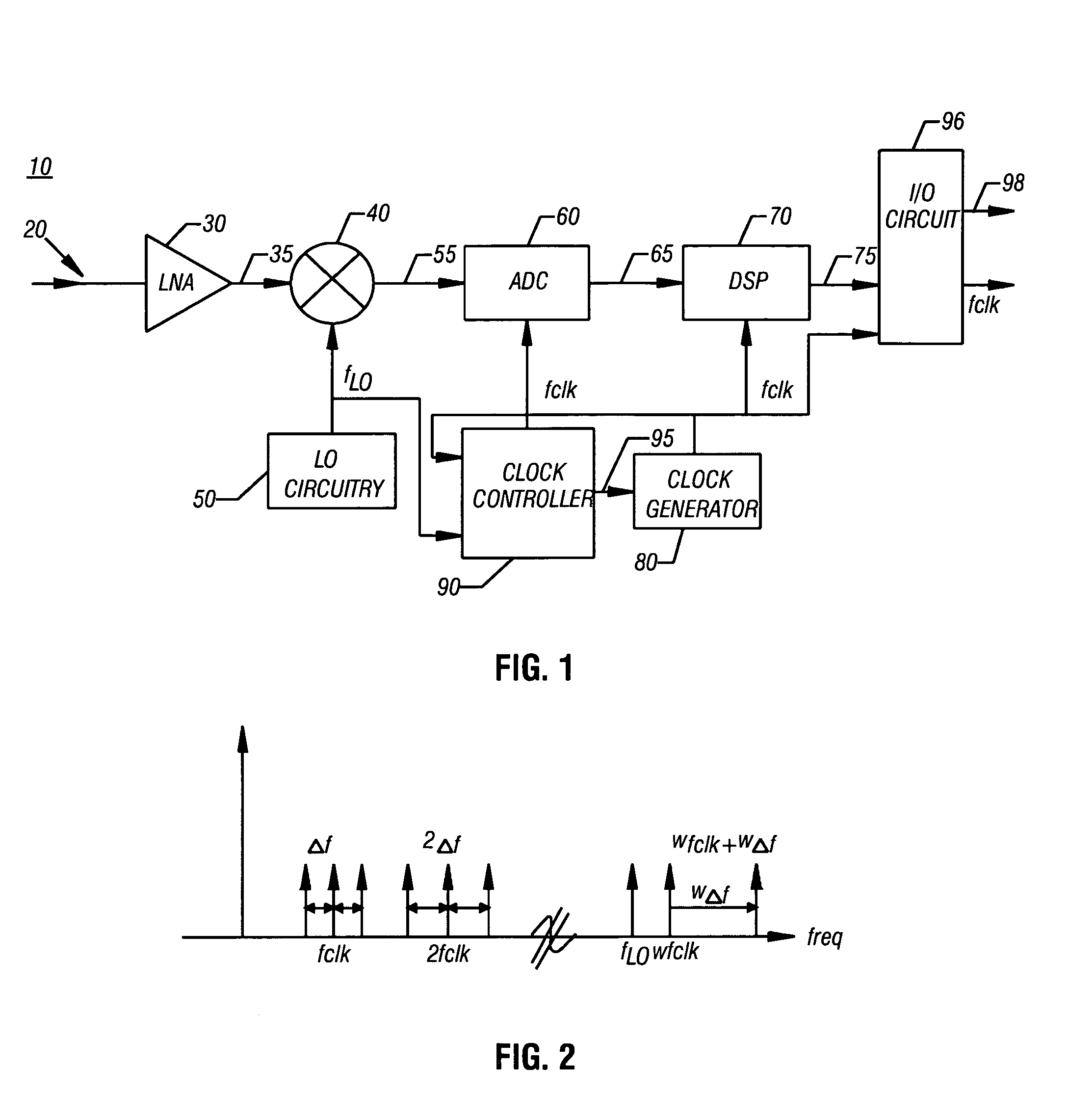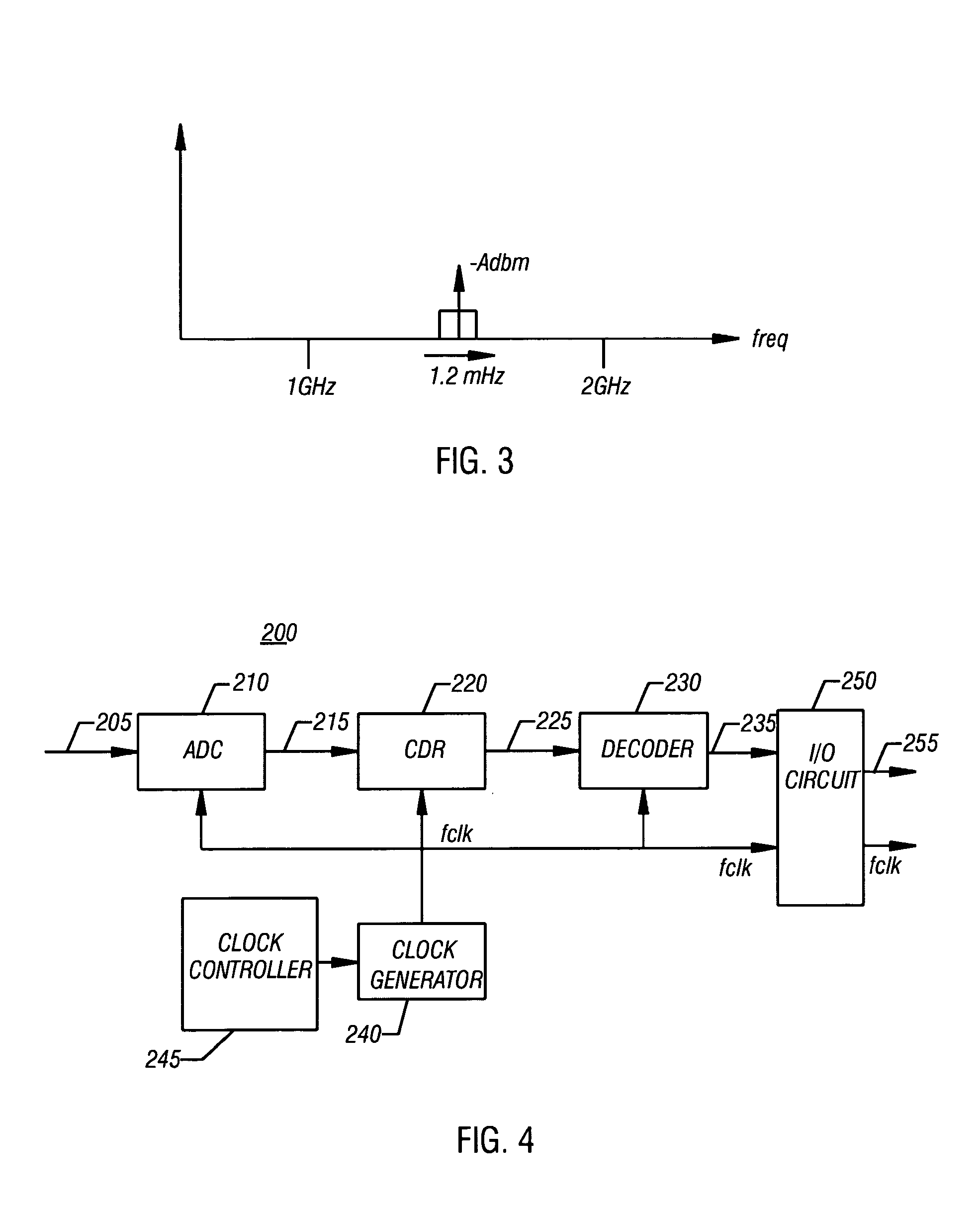Selecting clock frequencies for baseband devices
a baseband device and clock frequency technology, applied in the field of integrated circuits, can solve problems such as the potential for interference between analog and digital components
- Summary
- Abstract
- Description
- Claims
- Application Information
AI Technical Summary
Benefits of technology
Problems solved by technology
Method used
Image
Examples
Embodiment Construction
[0011] Referring to FIG. 1, shown is a block diagram of a system in accordance with one embodiment of the present invention. As shown in FIG. 1, system 10 may be, for example, a receiver for use in a RF system such as a satellite receiver for use in a set-top box or other television tuner. While discussed primarily herein as used in such a satellite system, it is to be understood that other embodiments of the present invention may be used in connection with other RF systems, such as cellular telephones, radios, other communication systems and the like.
[0012] As shown in FIG. 1, system 10 receives an incoming signal 20 at a low noise amplifier (LNA) 30. The resulting amplified signal 35 may then be input into a mixer 40, where the RF signal is mixed with a local oscillator (LO) frequency (fLO) provided by LO circuitry 50.
[0013] The resulting downconverted signal 55 may be provided to baseband circuitry for further processing. For example, downconverted signal 55 may be sent to an a...
PUM
 Login to View More
Login to View More Abstract
Description
Claims
Application Information
 Login to View More
Login to View More - R&D
- Intellectual Property
- Life Sciences
- Materials
- Tech Scout
- Unparalleled Data Quality
- Higher Quality Content
- 60% Fewer Hallucinations
Browse by: Latest US Patents, China's latest patents, Technical Efficacy Thesaurus, Application Domain, Technology Topic, Popular Technical Reports.
© 2025 PatSnap. All rights reserved.Legal|Privacy policy|Modern Slavery Act Transparency Statement|Sitemap|About US| Contact US: help@patsnap.com



